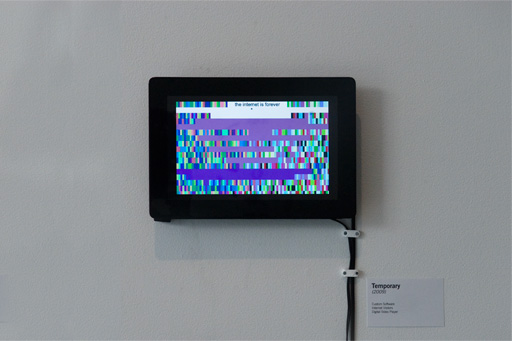
click here to view the video
Virtual data isn't like traditional media. In fact, virtual data is far closer in shape to an idea than it is to any tangible object. It can be copied infinitely, either perfectly (digitally), or modified through repetition (re-blogging or plagiarizing via the internet). In one important way however, virtual data is far more powerful than ideas: it doesn't require a human to remember it since this task can be offloaded onto a machine. Because data can be recorded and distributed by computers without human intervention, we have difficulty understanding exactly what qualities virtual data does or does not have. Previously simple concepts like where our data actually is, how we can use it, or how long it will exist, are surprisingly hard to keep track of. Are the qualities that we have associated with data the most appropriate? Can we change the way data behaves to make it more meaningful?
We generally believe that personal virtual data isn't subject to decay, yet it is still subject to loss. This can occur because of disk failure, viruses, or accidental deletion. Unlike personal data however, data on the internet has a seemingly infinite copy-and-paste shelf-life. Between search-engine caching, cloud-hosting, re-blogging, plagiarizing, and the way-back machine, the net collects and eternally stores vast amounts of information.
Temporary eschews this paradigm. For each unique visitor it receives, Temporary deletes part of itself. These deletions change the way browsers understand the website's code and create a unique (de)generative piece after each new user. Because each unique visit produces a new composition through self-destruction, Temporary can never be truly indexed, as any subsequent act of viewing irreparably modifies it.
Eventually, like tangible media, Temporary will fall apart entirely, becoming a blank white website. Its existence will be remembered only by those who saw or heard about it.
visit temporary here |